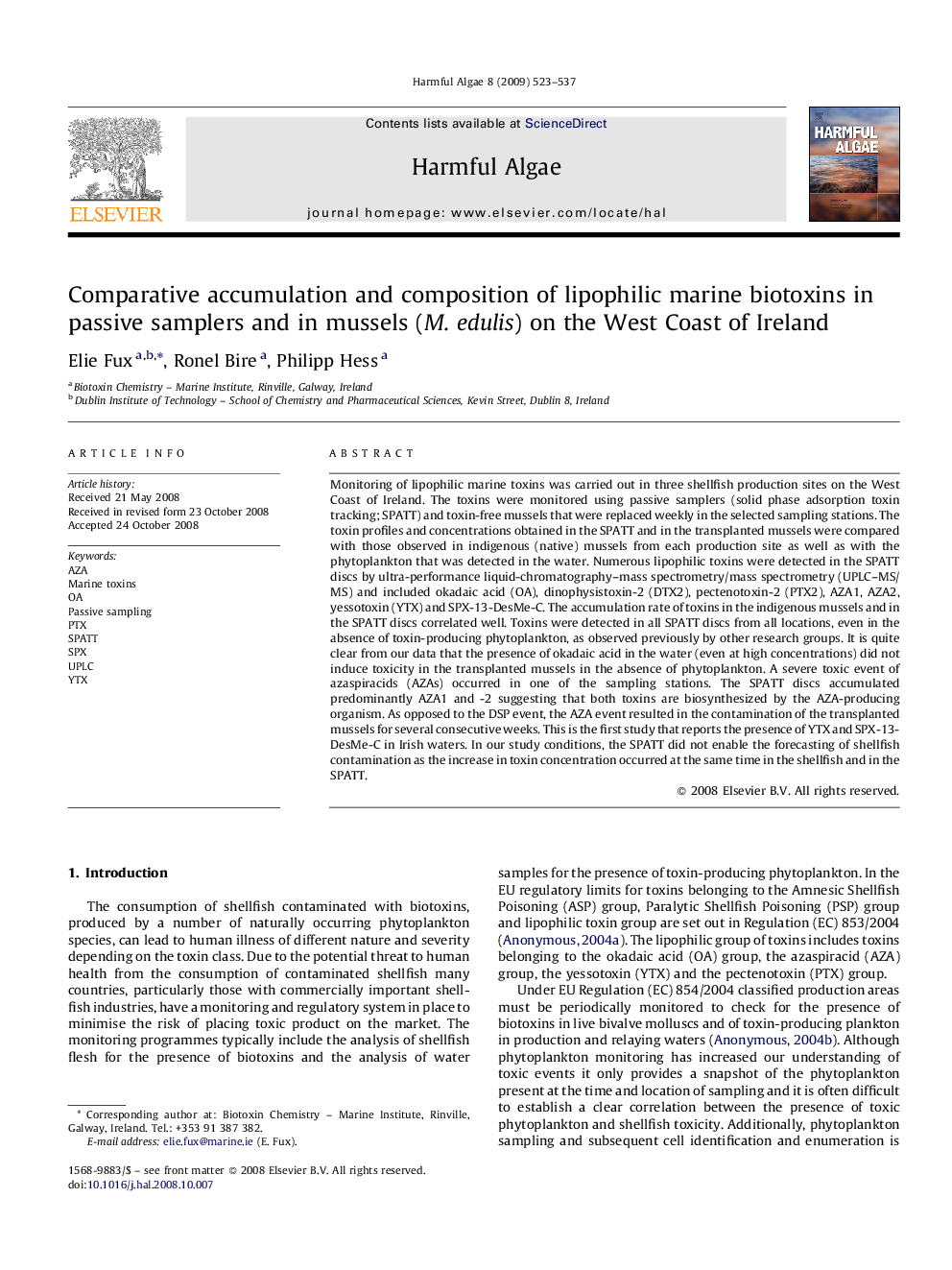| کد مقاله | کد نشریه | سال انتشار | مقاله انگلیسی | نسخه تمام متن |
|---|---|---|---|---|
| 4545828 | 1327473 | 2009 | 15 صفحه PDF | دانلود رایگان |

Monitoring of lipophilic marine toxins was carried out in three shellfish production sites on the West Coast of Ireland. The toxins were monitored using passive samplers (solid phase adsorption toxin tracking; SPATT) and toxin-free mussels that were replaced weekly in the selected sampling stations. The toxin profiles and concentrations obtained in the SPATT and in the transplanted mussels were compared with those observed in indigenous (native) mussels from each production site as well as with the phytoplankton that was detected in the water. Numerous lipophilic toxins were detected in the SPATT discs by ultra-performance liquid-chromatography–mass spectrometry/mass spectrometry (UPLC–MS/MS) and included okadaic acid (OA), dinophysistoxin-2 (DTX2), pectenotoxin-2 (PTX2), AZA1, AZA2, yessotoxin (YTX) and SPX-13-DesMe-C. The accumulation rate of toxins in the indigenous mussels and in the SPATT discs correlated well. Toxins were detected in all SPATT discs from all locations, even in the absence of toxin-producing phytoplankton, as observed previously by other research groups. It is quite clear from our data that the presence of okadaic acid in the water (even at high concentrations) did not induce toxicity in the transplanted mussels in the absence of phytoplankton. A severe toxic event of azaspiracids (AZAs) occurred in one of the sampling stations. The SPATT discs accumulated predominantly AZA1 and -2 suggesting that both toxins are biosynthesized by the AZA-producing organism. As opposed to the DSP event, the AZA event resulted in the contamination of the transplanted mussels for several consecutive weeks. This is the first study that reports the presence of YTX and SPX-13-DesMe-C in Irish waters. In our study conditions, the SPATT did not enable the forecasting of shellfish contamination as the increase in toxin concentration occurred at the same time in the shellfish and in the SPATT.
Journal: Harmful Algae - Volume 8, Issue 3, February 2009, Pages 523–537